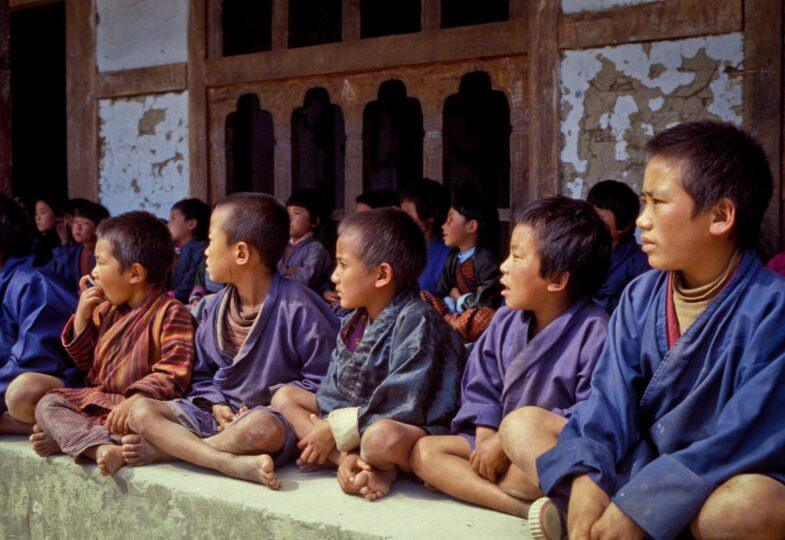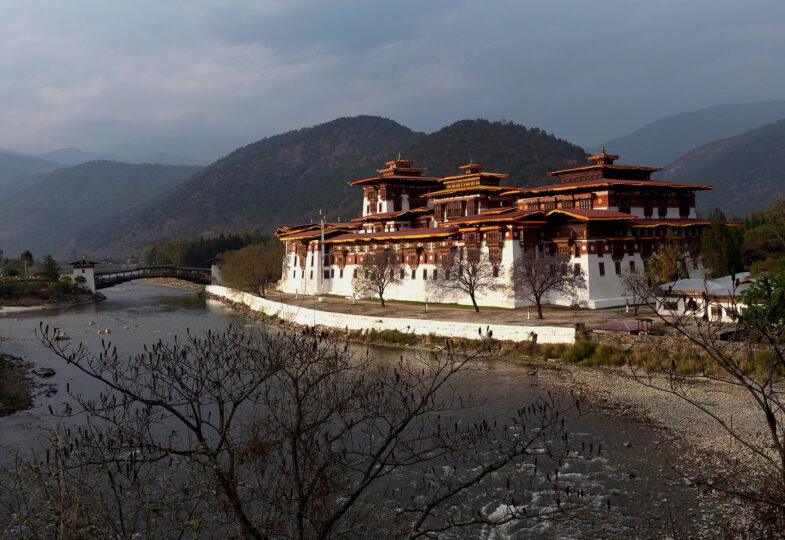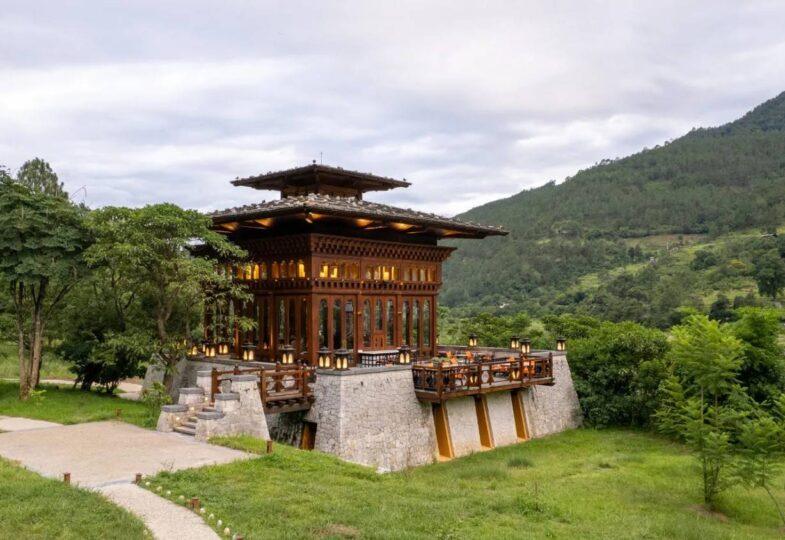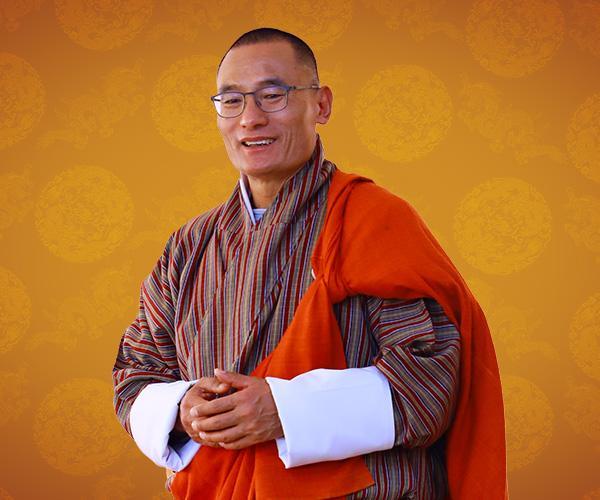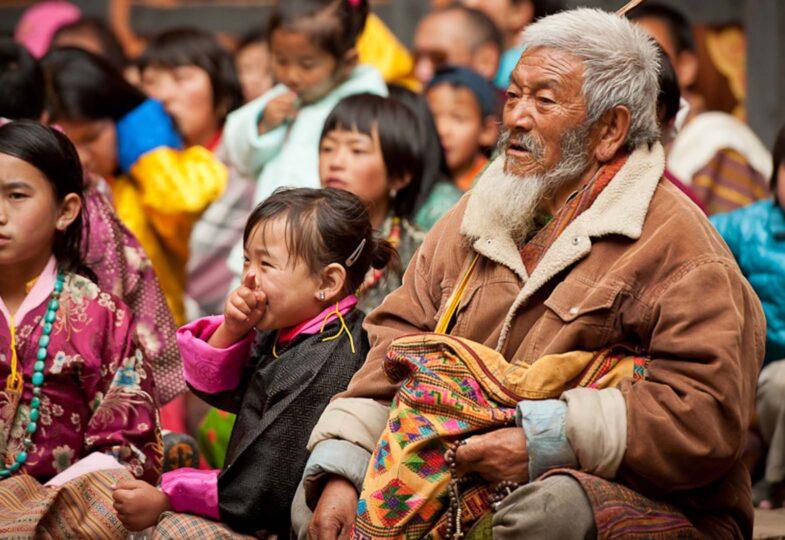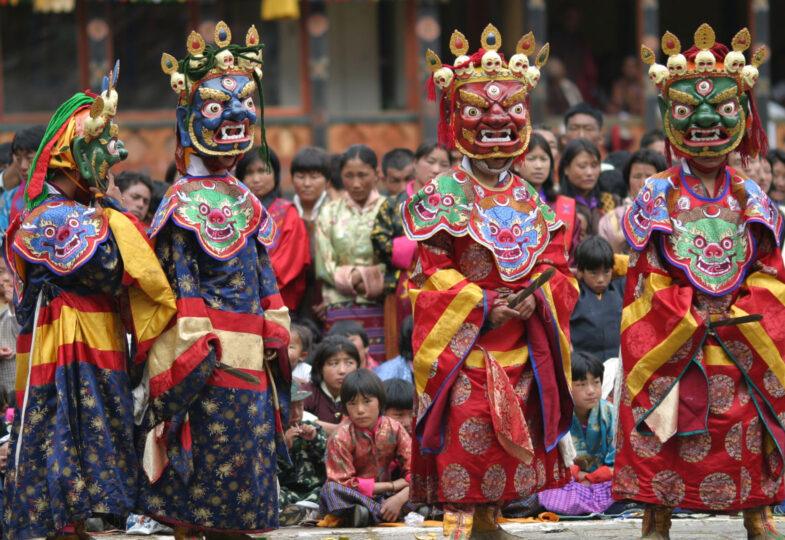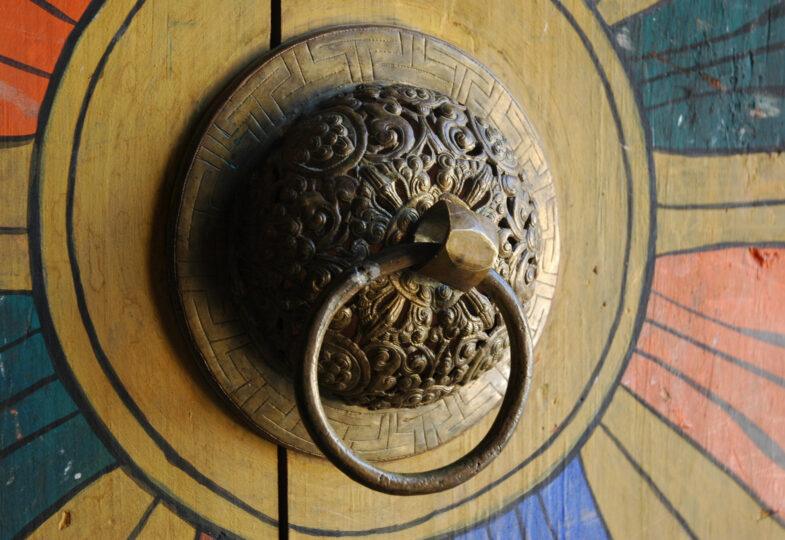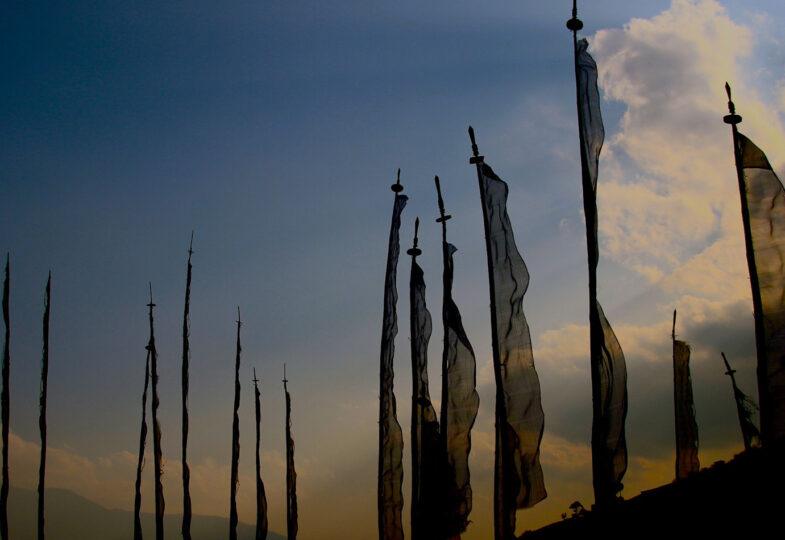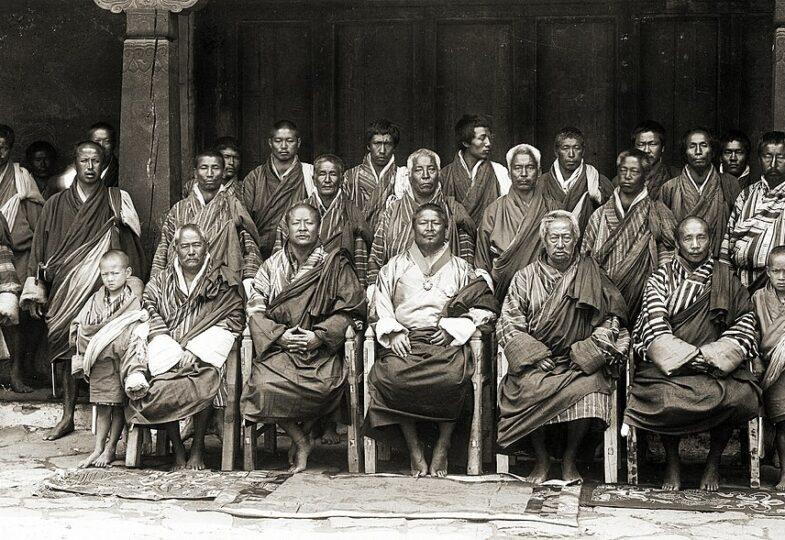National Flag of Bhutan
The national flag of Bhutan is a powerful symbol of the nation’s identity and values. The flag is divided diagonally, with the upper yellow half representing the authority of the King, symbolizing secular tradition. The lower orange half signifies the spiritual practice and heritage of Buddhism. At the center lies a white dragon, symbolizing purity, loyalty, and the strength of the people. The jewels held in its claws represent the country’s wealth and security. Altogether, the flag embodies Bhutan’s unity, sovereignty, and balance between spiritual and temporal powers.
National Sport – Archery
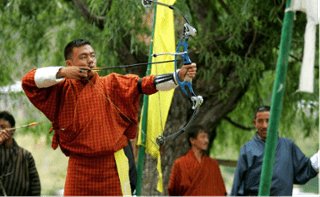
Archery is not only Bhutan’s national sport but also a cherished cultural tradition. Deeply rooted in Bhutanese mythology and festivals, archery is more than just a competition—it is a social celebration. Tournaments often include singing, dancing, and playful banter among teams, reflecting the joy and communal spirit that surround the game. The bow and arrow are symbols of protection and cultural pride, often featured in both religious and secular events throughout the country.
National Emblem of Bhutan
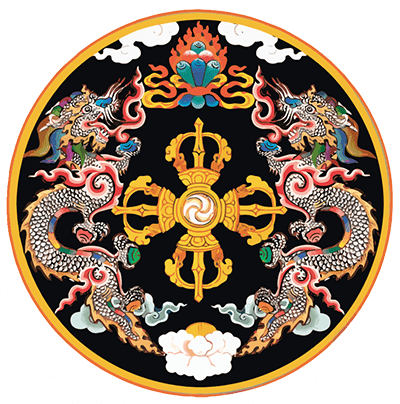
The national emblem of Bhutan complements the elements found in the national flag and is rich in Buddhist symbolism. Enclosed within a circular border, the emblem features a double diamond thunderbolt (dorje) resting on a lotus flower, topped with precious jewels, and flanked by two dragons. Each element holds deep meaning: the dorje symbolizes the balance of secular and spiritual authority, the lotus stands for purity, and the jewels represent the sovereign power of the government. The two dragons—one male and one female—symbolize the name of the country they guard: Drukyul, or “Land of the Thunder Dragon.”
National Bird of Bhutan – The Raven
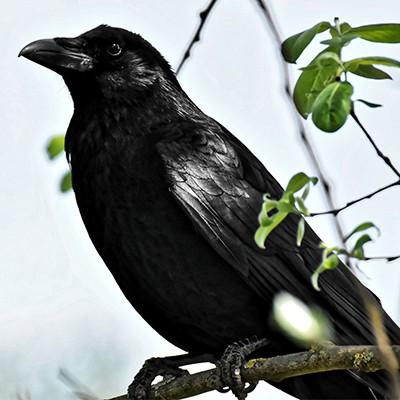
The Raven is the national bird of Bhutan and holds deep cultural and spiritual significance. Known for its intelligence and strength, the Raven symbolizes protection and the guiding spirit of the Bhutanese people. It is closely associated with Bhutan’s royal heritage and was the personal symbol of the first king, Ugyen Wangchuck. The Raven is also depicted atop the royal crown, representing the deity Gonpo Jarodongchen, one of Bhutan’s guardian deities. Its presence reflects Bhutan’s deep connection with nature, mythology, and the spiritual protection that surrounds the kingdom.
National Animal of Bhutan – The Takin
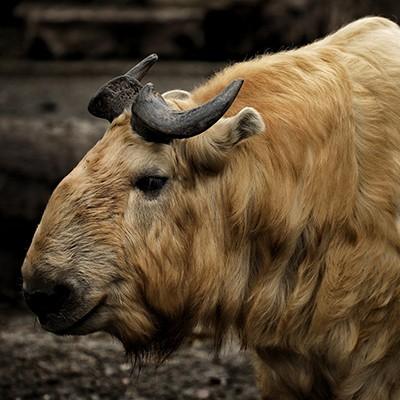
The Takin (Budorcas taxicolor) is the national animal of Bhutan, a rare and unique creature found in the eastern Himalayas. With the body of a cow and the head of a goat, the Takin is deeply rooted in Bhutanese mythology. According to legend, it was created by the great Buddhist saint Drukpa Kunley, also known as the “Divine Madman,” who magically formed the animal from the bones of a goat and a cow. The Takin perfectly represents Bhutan’s rich blend of nature, folklore, and spiritual heritage. Protected by law, it can be seen in the Motithang Takin Preserve in Thimphu, symbolizing the country’s strong commitment to wildlife conservation.
National Flower of Bhutan – The Blue Poppy
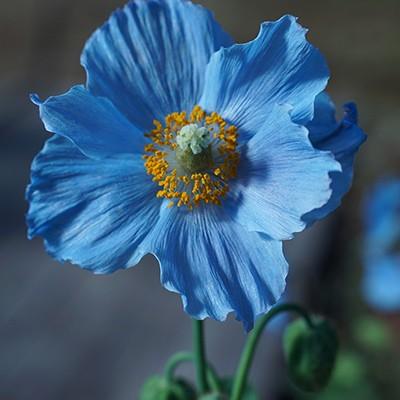
The Blue Poppy (Meconopsis gakyidiana) is Bhutan’s national flower, admired for its rare beauty and spiritual symbolism. Found high in the Himalayan alpine meadows, this delicate flower blooms in shades of vibrant blue and violet. Once mistaken for a myth, the Blue Poppy reflects Bhutan’s mystical landscape and its connection to purity, resilience, and peace. It was officially recognized as a new species native to Bhutan and symbolizes the nation’s pursuit of happiness and harmony with nature. The flower’s elusive nature and striking appearance make it a perfect emblem of Bhutan’s unique and untouched natural heritage.
National Tree of Bhutan – The Himalayan Cypress
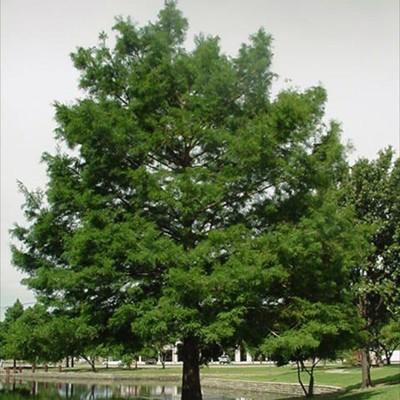
The Himalayan Cypress (Cupressus torulosa) is the national tree of Bhutan, known for its elegant form and evergreen resilience. Often found near temples, monasteries, and dzongs, the tree is deeply revered in Bhutanese culture and symbolizes longevity, strength, and spiritual harmony. Its ability to thrive in high altitudes and challenging conditions reflects the endurance and spiritual depth of the Bhutanese people. The Himalayan Cypress is also associated with religious rituals and is considered sacred in Bhutanese Buddhism, often planted near sacred sites to bless and protect the land.
Currency of Bhutan – The Ngultrum (BTN)
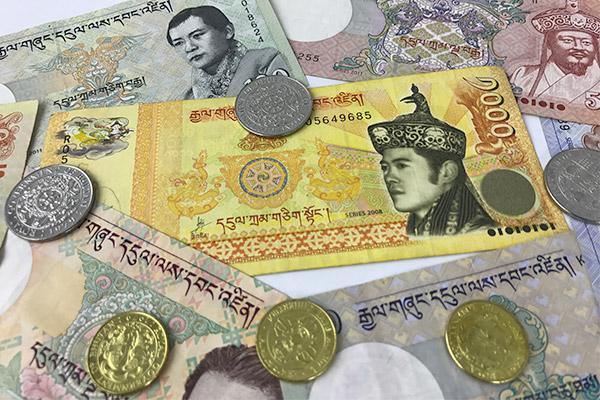
The official currency of Bhutan is the Ngultrum (BTN). It is pegged at par with the Indian Rupee (INR), which is also accepted as legal tender throughout the country. Introduced in 1974, the Ngultrum is issued by the Royal Monetary Authority of Bhutan. The currency reflects Bhutan’s rich cultural heritage, with notes and coins featuring images of traditional architecture, religious symbols, and revered leaders. Its stable value and close linkage with the Indian economy play a key role in Bhutan’s financial system and cross-border trade.
National Language of Bhutan – Dzongkha
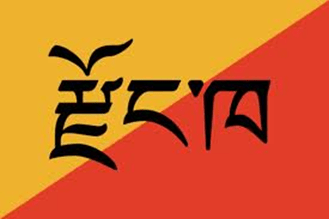
Dzongkha is the national language of Bhutan. It is a Sino-Tibetan language spoken primarily in the western regions of the country and serves as the medium for government, education, and official communication. The word “Dzongkha” means “language of the fortress,” referring to its historical use in dzongs (fortress-monasteries) by monks and administrators. Written in the Tibetan script, Dzongkha reflects Bhutan’s rich cultural and religious heritage. While Bhutan is home to many regional languages and dialects, Dzongkha plays a vital role in uniting the nation through a common linguistic identity.



